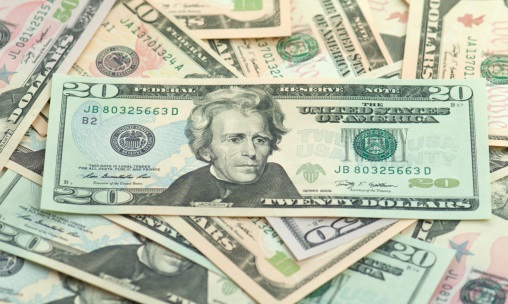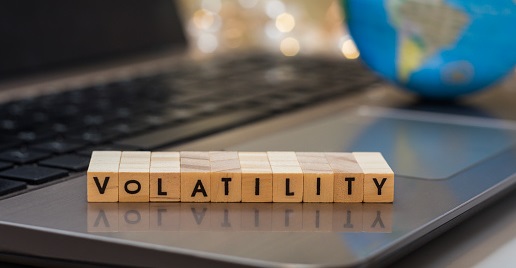The US dollar is up for a third straight session and on course for its best week since March 2020; the US Dollar Index, a trade-weighted basket of major USD pairs (such as EURUSD, GBPUSD, USDJPY and USDCNY), looks set to end the week 1.9% higher, having surged from Monday opening levels around 90.50 to current levels around 92.25, the buck’s best levels since April. The catalyst for the surge higher was, as any market person who hasn’t been living under a rock will by now know, Wednesday’s more hawkish than expected FOMC meeting of US Federal Reserve monetary policy makers.
Without going into too much detail about the outcome of meeting as expected the Fed held policy settings steady as expected (interest rates were left at 0.0-0.25% and QE purchases at $120B per month). What moved markets was a combination of the Fed’s more hawkish policy guidance, the Fed’s more optimistic view on the prospect for the economic recovery and the fact that the discussion on tapering asset purchases at the bank appears to have begun. Starting with the former; the Fed’s widely followed dot-plot (Fed policy makers each place a dot where they think rates will be over the course of the coming years), which had previously forecast no rate hikes through to at least 2024 (as seen by the median of dots not predicting any hikes), now forecasts 50bps worth of rate hikes by the end of 2023 (again, as seen by the median of dots). Meanwhile, economic forecasts (GDP and inflation) were upgraded to reflect a more bullish outlook for the US economy and Fed Chair Jerome Powell sounded upbeat on the prospect for economic recovery. Finally, as many analysts had been expecting, Powell also indicated that the discussion amongst policy makers regarding how and when to start winding down the bank’s monthly QE purchases had formally begun.
Markets seem not to have anticipated that the Fed would turn quite as hawkish as it had, with particular surprise expressed by market participants regarding the change in the Fed’s dot-plot interest rate guidance. Judging by the reaction in 2-year US bond yields, which have spiked by about 15bps to above 0.25%, bond market participants are predicting a strong chance that there will be a 25bps hike from the Fed within the next two years. Indeed, money markets are now pricing a near 30% chance that the Fed will hike its target federal funds range to 0.25-0.5% by the 27th of July 2022 meeting, which is a little over one year away. In other words, the outlook for short-term interest rate and bond yields in the US has improved significantly. This more bullish outlook for short-term rates is likely one of the primary drivers behind the dollar’s now going onto three-day surge – as the US rate advantage in the short-end of the curve returns over the coming years, this is will boost the dollar’s investment appeal, and traders are unsurprisingly front-running this.
Back to bond markets, slightly longer-term yields such as the US 5-year yield are also substantially higher, up about 12bps to 0.9% versus pre-FOMC levels as market participants bring forward their anticipated timeline for the Fed’s coming hiking cycle (in other words, if the Fed’s coming hiking cycle is expected to lift rates eventually back to above 2.0%, markets are now expecting more of these hikes to the 2.0% to come within the next five years).
Another interesting observation that can be derived from the bond market response to this week’s FOMC meeting is the fact that longer-term nominal bond yields, like the 10 and 30-year yields have actually fallen; the former is now below pre-FOMC meeting levels and hit lows under 1.45% today, while the 30-year yield has cratered back towards 2.0% from pre-FOMC levels of closer to 2.20%. This drop in long-term nominal yields is the result of a combination of higher real yields (10 and 30-year TIPS yields are both up and in response to the more hawkish Fed) and lower inflation expectations. The latter seems to reflect a reduction in inflation bets, with the Fed’s more hawkish interest rate guidance instilling confidence that the Fed won’t allow inflation to run too hot in the coming years, or even that they might “loose control” of inflation. All in all, lower long-term nominal bond yields seem to suggest that the Fed’s more hawkish stance has encouraged markets that a scenario where the Fed allows the economy and inflation to heat up “too much” meaning they then need to hike rates more aggressively to get control of things has become less likely. In other words, fears of the Fed being behind the curve seem to have eased.
The stock market reaction in wake of the Fed has been a mixed affair. For the most part, US equities are now decisively lower, with the S&P 500 index likely to end the week close to 2.0% lower in the 4175 area having set record highs earlier in the week above 4250. But tech stocks have held up well; the Nasdaq 100 index is still in the green on the week having hit record levels above 14.2K on Thursday, boosted by the drop in long-term nominal yields, with which large tech/growth stocks tend to have a strong negative correlation.
As far as some stock market analysts are concerned, conditions for equities right now might be “goldilocks”; firstly, though expectations for Fed tightening may have been brought forward in wake of Wednesday’s meeting, any tightening remains a long way off (18 months, according to the latest dot-plot). In the meantime, even if the Fed does start to taper asset purchases, policy is set to remain highly accommodative. All the while, the Fed is bullish on the prospect for economic growth and the US economy appears to be on course to surpass its pre-Covid-19 levels and even accelerate above its pre-Covid-19 growth trend in the months ahead. Thus, strong growth and continued Fed accommodation in the medium term is being seen by some as a perfect combination for equities. Secondly, as noted above as a potential reason for the fall in long-term yields, the perception that an earlier Fed hiking cycle might actually be better for the economy if it means the Fed doesn’t fall behind the curve and then be forced to tighten policy more aggressively might also help support stock prices over the medium-term.
What’s next for markets?
It seems likely that short-end US yields (i.e. 2 and 5-year yields) are destined to move higher as we move ever closer to the expected first Fed rate hike, which according to the Fed could come in 2023, but according to markets could come in 2022. Fed speakers will be out in force next week helping to inform expectations as to the timing of this tightening cycle. Fed member Bullish, who seems to be on the more hawkish end of the spectrum at the bank, was today out calling for a hike by the end of next year and this seems to have contributed to some of the USD strength, 2-year yield upside and equity market and long-term interest rate downside that we have seen today. More hawkish vibes from other policy makers with regards to when the first hike is coming may provoke a similar market reaction next week.
Looking over a longer time horizon, with it very much feeling as though we are close to the start of the Fed’s post-Covid-19 pandemic tightening cycle, it would seem likely that USD would outperform those currencies whose central banks whose timelines to policy tightening are much more dovish, namely EUR, JPY, CHF and SEK in the G10. Market participants likely expect that 2-year rate differentials between the US and the countries of these currencies will continue to move in the dollar’s favour. Currencies where central banks are already tightening (many in EM) or are at least on a similar timeline to tightening (NOK, CAD, AUD, NZD and GBP?) are likely to be better insulated against any further dollar advances.
Finally, with regards to stock markets, a hawkish Fed dose post a downside risk over the near-term (as we have seen today) but as long as equity market participants don’t start panicking about the Fed making a mistake (i.e. by tightening too quickly) then experience of the years prior to the Covid-19 pandemic suggests that stocks can continue to appreciate at a healthy rate despite a hawkish Fed. In other words, as already alluded too above, as long as markets are confident that the Fed is “in control”, i.e. not allowing the economy to run too hot then being forced to tighten aggressively (and perhaps causing a recession) or by tightening too quickly (and perhaps causing a recession), the bull-market can remain intact.




